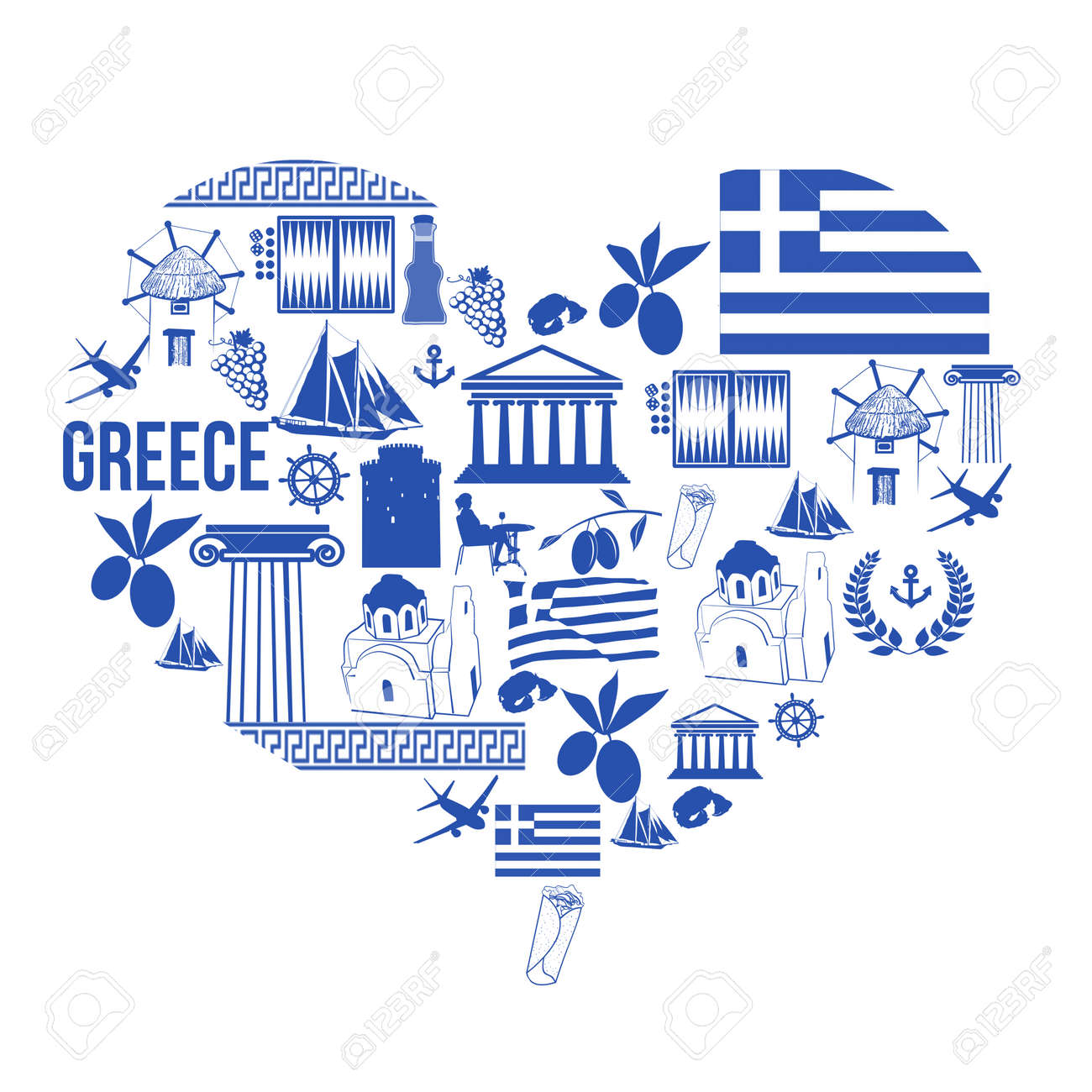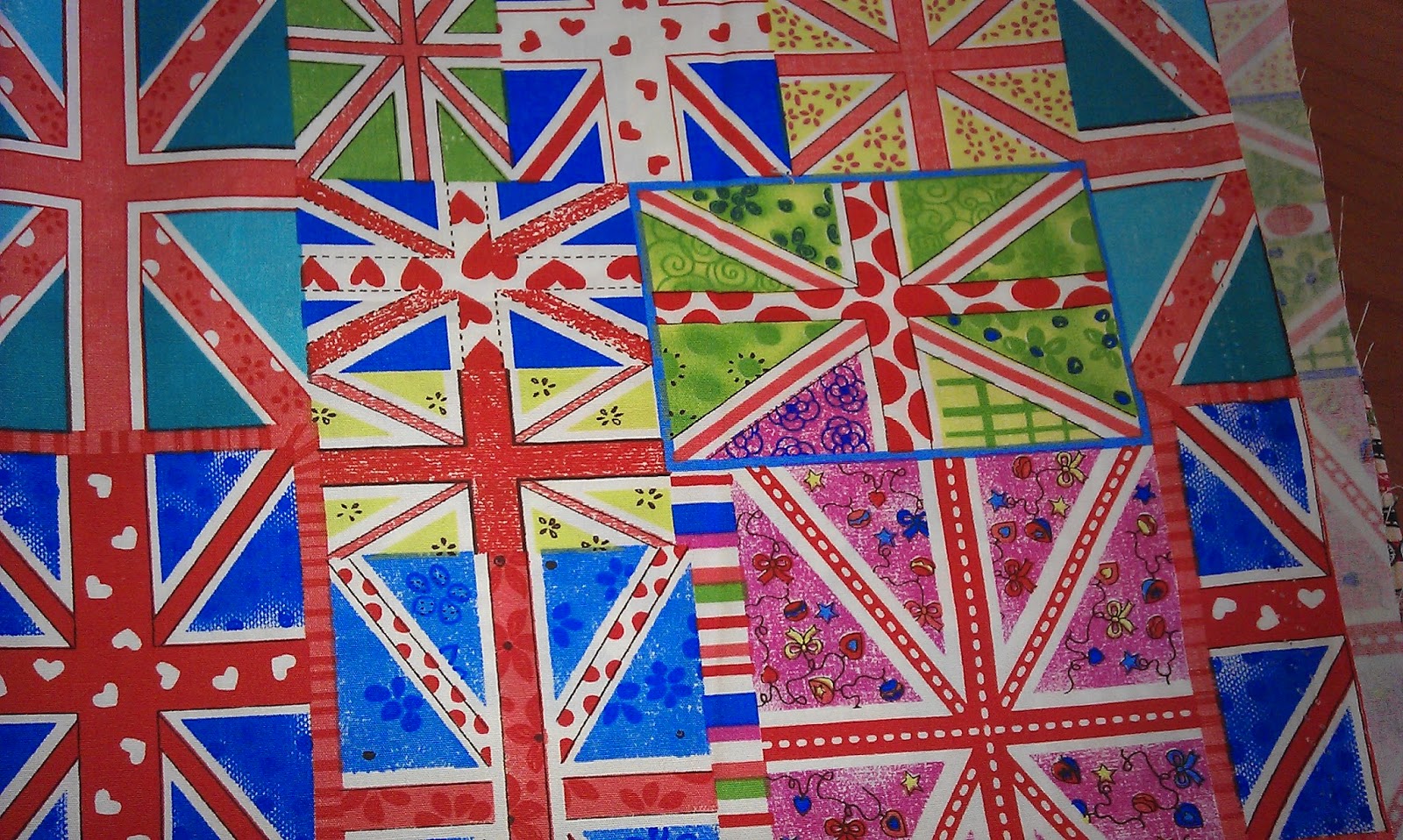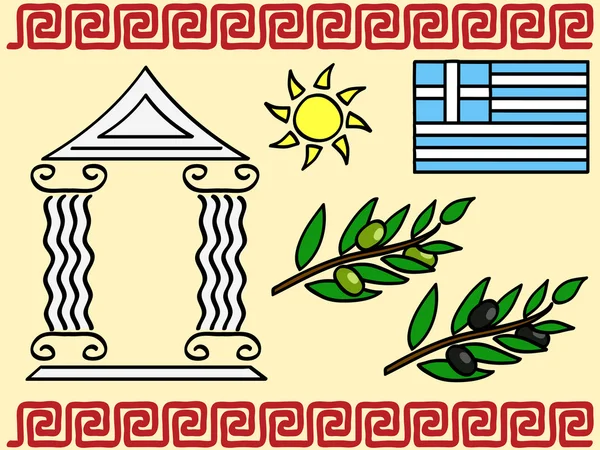I've been collecting fabrics of all kinds for many years now. My special interest fabrics are those that can convey a sense of identity, especially Greek, in a similar way to the clothing, accessories and upholstery designs associated with the UK and US: namely, their iconic cities - London and New York - which, along with Paris, are the only cities to feature in international designs, and their flags - the Union Jack and the Stars and Stripes - which happen to be the only flags that feature in those same international designs.
The UK/US flag is also redesigned in many ways, using fabric ideas such as patchwork, 'shabby chic' and colour alterations, among others, especially for the purposes of patchwork and applique sewing techniques, and design in general. Patchwork is a common hobby among fabric enthusiasts all over the Anglo-Saxon world, and the actual designs of these two flags lend themselves well enough to such alterations. So does the design of the Greek flag, with its cross and many lines. But the international fashion market is dominated by the UK/US flags; ξενομανία (cf. ξένος - KSE-nos = 'stranger', and μανία - ma-NI-a = 'mania') has also ruled the Greek market to a great extent. So there is no such corresponding market in Greek fabrics or Greek flag designs, showcasing Greek identity in common everyday-use objects in this way.
Patchwork is not really a homecrafts tradition in Greece, although rags and scraps of fabric were never thrown out in pre-industrial days: they were re-used, including patchwork-style, as part of the frugal lifestyle. I still have a patchwork rug, made by my grandmother in the log cabin style: some of the fabric has worn away, but some is definitely still distinct and can be traced as vintage early 20th century fabric. The Greek kourelou tradition also uses scrap rags woven to make a rug.
While on a visit to New Zealand over a decade ago, I was intrigued to come across fabrics with designs associated with New Zealand. Such fabrics are very idiosyncratic, and would not be understood by anyone outside New Zealand without an explanation: flora such as kowhai, pohutukawa, the fern; fauna like the kiwi, the pukeko and the shell of the paua, and Maori artwork. They would not have a great appeal, apart from among New Zealand patchworkers, and perhaps the tourist trade. The fact that such fabrics exist is perhaps based on the idea of a collective national pride, things that New Zealanders, no matter their differences, share with each other. The same that I bought so many years ago are still being sold in New Zealand, and they remain particular to the country - you would only use them in a genuine Kiwi design, because they don't lend themselves well to be added elsewhere.
I have just started using these fabrics in a patchwork quilt. The quilt design I've chosen looks quite ambitious, but with a sewing machine, a rotary fabric cutter and some μεράκι, this kind of work doesn't take a long time to finish.
Although patchwork, in the US/UK meaning, is not a tradition in Greece (I myself picked it up while living in New Zealand), there are now patchwork groups in Greece - this is not necessarily a post-crisis thing: foreigners living in Greece have introduced the locals to this fabric art. But the crisis has certainly helped make people more aware of patchwork, both as a hobby and as a way to re-use something frugally in a creative way, and there are now web-based Greek patchwork groups.
 The absence of Greek-based fabric designs is a tricky issue to interpret. I sometimes see it as a lack of interest in collective identity: Greeks tend to be τοπικιστές. The concept of nationality-based fabric designs is also an Anglo-Saxon one, extending to its colonies. Tourist shops sell clothing with Greek-based fabric designs. The meander is the most often-used design in tourist-related products, labelled 'Greek key'. But that is more closely associated with Ancient Greece, not the modern present-day country. It's also often used in American college designs with the Greek alphabet (try googling images for just the word 'Greek'). There are also many Greek fabric souvenirs (eg towels, kitchen gloves, tablecloths, etc) that bear summertime Greek motifs depicting island scenery, the sun, the olive, etc. But they also tend to have a big fat placename (eg Athens, Greece, Crete, etc) printed over them, which makes them clearly destined for the tourist market: this kind of fabric is not the same kind as that used in patchwork. The low quality fabric and its kitsch design value, as well as its mass production, hints that it is most likely all made in China.
The absence of Greek-based fabric designs is a tricky issue to interpret. I sometimes see it as a lack of interest in collective identity: Greeks tend to be τοπικιστές. The concept of nationality-based fabric designs is also an Anglo-Saxon one, extending to its colonies. Tourist shops sell clothing with Greek-based fabric designs. The meander is the most often-used design in tourist-related products, labelled 'Greek key'. But that is more closely associated with Ancient Greece, not the modern present-day country. It's also often used in American college designs with the Greek alphabet (try googling images for just the word 'Greek'). There are also many Greek fabric souvenirs (eg towels, kitchen gloves, tablecloths, etc) that bear summertime Greek motifs depicting island scenery, the sun, the olive, etc. But they also tend to have a big fat placename (eg Athens, Greece, Crete, etc) printed over them, which makes them clearly destined for the tourist market: this kind of fabric is not the same kind as that used in patchwork. The low quality fabric and its kitsch design value, as well as its mass production, hints that it is most likely all made in China.
This leads to the question of what kind of Greek iconic images would be used in the concept of Greek fabric design if (or more likely, when) they come onto the Greek market. We all have collective iconic images of Greece in the sub-conscious, but they may be different according to the individual: Tourists might mention things to do with summertime Greek island scenery and the Acropolis (google images for just the word 'Greece'). But what would a Greek person living in Greece first put in their mind? Maybe they would not have given it much thought in the first place: Greeks tend to take their surroundings for granted in this respect... Whatever these instantly recognisable iconic Greek timeless images are, they need to be separated from 'touristy Greece'.

If I could design such fabric myself, I would want to see things that remind me of the Greece I am living in now, modern Greece, not ancient Greece. Try googling the images for 'traditional Greek symbols': the icons that come up depict ancient Greece - and they are most often non-Greeks' ideas of what constitutes a Greek symbol.
©All Rights Reserved/Maria Verivaki/The Greek Collection/Organically Cooked. No part of this blog may be reproduced and/or copied by any means without prior consent from Maria Verivaki.
 |
| My grandmother's patchwork rug: it's all hand-sewn. |
While on a visit to New Zealand over a decade ago, I was intrigued to come across fabrics with designs associated with New Zealand. Such fabrics are very idiosyncratic, and would not be understood by anyone outside New Zealand without an explanation: flora such as kowhai, pohutukawa, the fern; fauna like the kiwi, the pukeko and the shell of the paua, and Maori artwork. They would not have a great appeal, apart from among New Zealand patchworkers, and perhaps the tourist trade. The fact that such fabrics exist is perhaps based on the idea of a collective national pride, things that New Zealanders, no matter their differences, share with each other. The same that I bought so many years ago are still being sold in New Zealand, and they remain particular to the country - you would only use them in a genuine Kiwi design, because they don't lend themselves well to be added elsewhere.
I have just started using these fabrics in a patchwork quilt. The quilt design I've chosen looks quite ambitious, but with a sewing machine, a rotary fabric cutter and some μεράκι, this kind of work doesn't take a long time to finish.
It's very hard to find Greek-based images on fabric, but I did manage to come across this gem - a Greek island motif - at the street market.
 The absence of Greek-based fabric designs is a tricky issue to interpret. I sometimes see it as a lack of interest in collective identity: Greeks tend to be τοπικιστές. The concept of nationality-based fabric designs is also an Anglo-Saxon one, extending to its colonies. Tourist shops sell clothing with Greek-based fabric designs. The meander is the most often-used design in tourist-related products, labelled 'Greek key'. But that is more closely associated with Ancient Greece, not the modern present-day country. It's also often used in American college designs with the Greek alphabet (try googling images for just the word 'Greek'). There are also many Greek fabric souvenirs (eg towels, kitchen gloves, tablecloths, etc) that bear summertime Greek motifs depicting island scenery, the sun, the olive, etc. But they also tend to have a big fat placename (eg Athens, Greece, Crete, etc) printed over them, which makes them clearly destined for the tourist market: this kind of fabric is not the same kind as that used in patchwork. The low quality fabric and its kitsch design value, as well as its mass production, hints that it is most likely all made in China.
The absence of Greek-based fabric designs is a tricky issue to interpret. I sometimes see it as a lack of interest in collective identity: Greeks tend to be τοπικιστές. The concept of nationality-based fabric designs is also an Anglo-Saxon one, extending to its colonies. Tourist shops sell clothing with Greek-based fabric designs. The meander is the most often-used design in tourist-related products, labelled 'Greek key'. But that is more closely associated with Ancient Greece, not the modern present-day country. It's also often used in American college designs with the Greek alphabet (try googling images for just the word 'Greek'). There are also many Greek fabric souvenirs (eg towels, kitchen gloves, tablecloths, etc) that bear summertime Greek motifs depicting island scenery, the sun, the olive, etc. But they also tend to have a big fat placename (eg Athens, Greece, Crete, etc) printed over them, which makes them clearly destined for the tourist market: this kind of fabric is not the same kind as that used in patchwork. The low quality fabric and its kitsch design value, as well as its mass production, hints that it is most likely all made in China.This leads to the question of what kind of Greek iconic images would be used in the concept of Greek fabric design if (or more likely, when) they come onto the Greek market. We all have collective iconic images of Greece in the sub-conscious, but they may be different according to the individual: Tourists might mention things to do with summertime Greek island scenery and the Acropolis (google images for just the word 'Greece'). But what would a Greek person living in Greece first put in their mind? Maybe they would not have given it much thought in the first place: Greeks tend to take their surroundings for granted in this respect... Whatever these instantly recognisable iconic Greek timeless images are, they need to be separated from 'touristy Greece'.

If I could design such fabric myself, I would want to see things that remind me of the Greece I am living in now, modern Greece, not ancient Greece. Try googling the images for 'traditional Greek symbols': the icons that come up depict ancient Greece - and they are most often non-Greeks' ideas of what constitutes a Greek symbol.
©All Rights Reserved/Maria Verivaki/The Greek Collection/Organically Cooked. No part of this blog may be reproduced and/or copied by any means without prior consent from Maria Verivaki.








No comments:
Post a Comment